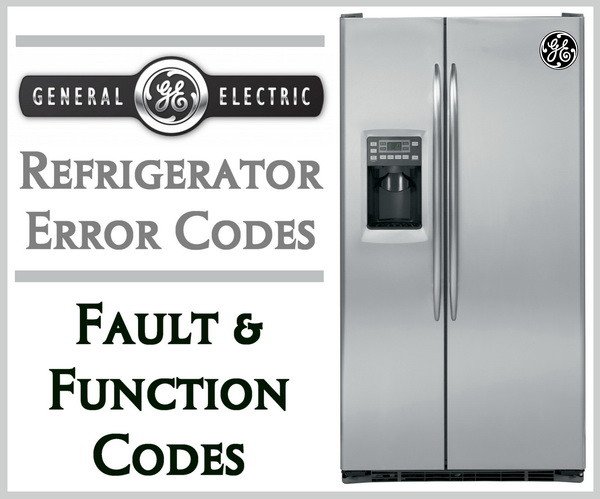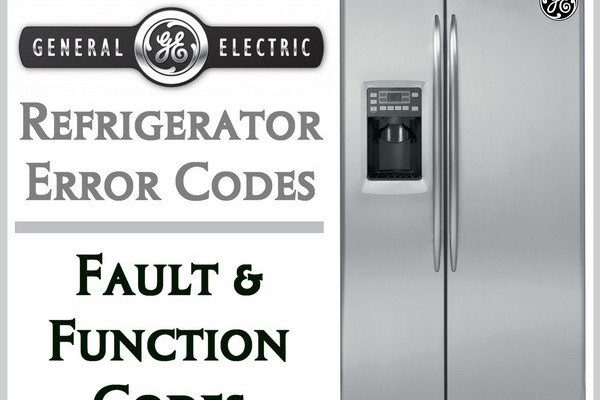
In the world of refrigerators, error codes are like little hints your appliance gives you. Think of them as cryptic messages or signals. But don’t worry—these puzzles don’t require an engineering degree to solve. We’re here to help you decipher what E3 is hinting at and decide if you need professional help or if it’s something you can handle yourself. So, let’s dive into this refrigerator mystery and find out exactly when you should reach out for a technician’s expertise.
Understanding the E3 Error Code
The E3 error code on a GE refrigerator typically relates to an issue with the defrost system. Imagine the defrost system like the snow-clearing service for your freezer. When things work properly, it occasionally melts away any frost that has built up, keeping your fridge functioning optimally. But when the E3 code pops up, it’s as if that service has stopped showing up, causing frost to gather and potentially disrupt the system.
You might wonder, why does the defrost system matter so much? Well, when frost accumulates, it can block vital airways and even cause your fridge to run inefficiently. Over time, this can lead to higher energy bills or, worse, spoil your food faster than you can consume it. The E3 code is essentially your refrigerator’s way of waving a flag to say, “Hey, you might need to check me out!”
Now, before you worry too much, remember that not all E3 codes mean an immediate disaster. Sometimes, it’s a simple sensor glitch or a temporary hiccup in the system. With a little bit of troubleshooting, you might save yourself a service call. But, it’s crucial to know when these attempts aren’t solving the issue.
Steps to Troubleshoot the E3 Code
Here’s the deal: tackling the E3 code might be simpler than you think. Start with a basic reset. Unplug your refrigerator, wait for about five minutes, and then plug it back in. It’s like rebooting your phone when it glitches—sometimes, it’s just what the doctor ordered. Check if the error persists. If it disappears, you might be in the clear. However, if it keeps flashing, it’s time for a deeper look.
Consider checking for physical blockages. Open your freezer and look for obvious ice buildup. If you find any, it might be obstructing a fan or another crucial part. Defrosting can be a time-consuming task, so be patient. This involves turning off your refrigerator and letting the ice melt away naturally. Make sure you have towels on hand to manage the water from melting ice.
Next, you’ll want to inspect the defrost thermostat and heater, which are integral in the defrosting process. While this might sound technical, think of them as the temperature sensors and heaters that regulate when to start and stop the defrost cycle. Without them functioning correctly, your fridge might not be clearing frost as it should. If you’re comfortable with a bit of DIY, you might test these components with a multimeter. If any of this feels daunting, don’t hesitate to call a technician.
When to Call a Technician
You might be wondering, when is it time to throw in the towel and call a pro? If you’ve reset your fridge, cleared obvious ice, and still see the E3 code, it’s likely time for expert eyes. Technicians have the tools and knowledge to dig deeper into the electronics and mechanics, ensuring no stone is left unturned.
Think of calling a technician as booking a health checkup for your refrigerator. They can diagnose hidden issues that aren’t immediately visible, such as malfunctioning defrost timers or faulty wiring. Their expertise can not only solve the current problem but also help prevent future errors.
Don’t view calling in help as a defeat. Some things are best left to professionals, especially when your fridge’s health, and your peace of mind, are on the line. Plus, a technician’s insight can provide reassurance that everything is functioning as it should.
Preventative Tips to Avoid Future E3 Codes
If there’s one lesson to take away, it’s that an ounce of prevention is worth a pound of cure. Keeping your refrigerator in tip-top shape can often head off issues before they start. Regular maintenance, like periodically defrosting your freezer, can keep frost from building up in the first place. Maintaining a clean and organized fridge and freezer also allows for proper airflow, reducing the chances of errors.
Consider scheduling regular checkups with a technician—like taking your car for an oil change, these can keep things running smoothly. During these inspections, technicians can catch potential problems early, saving you from more costly repairs down the line.
And remember, keeping your refrigerator at the right temperature plays a vital role. Not too cold, not too warm—finding that sweet spot can help keep defrost systems working correctly. By taking these small steps, you can extend the life of your appliance and reduce the likelihood of seeing that pesky E3 code again.
In short, while the E3 code might seem intimidating at first, it doesn’t have to be a major headache. With a bit of understanding and some simple actions, you can decide when it’s time to bring in the professionals, ensuring your fridge stays in good working order.
